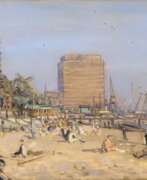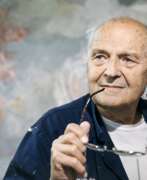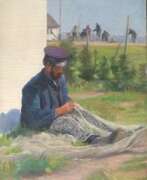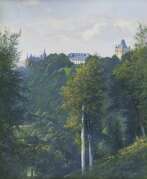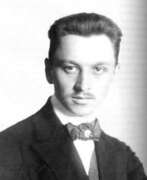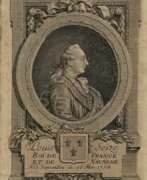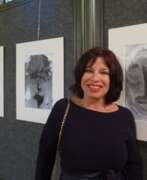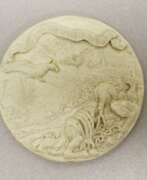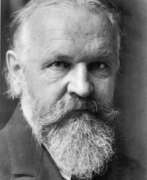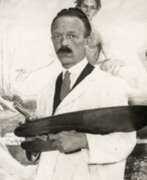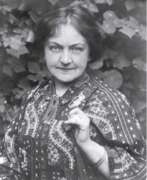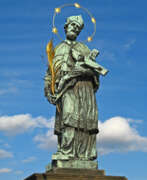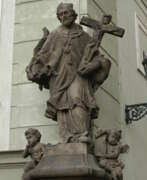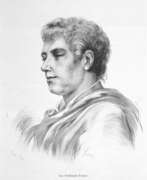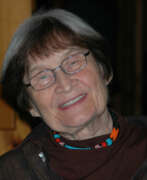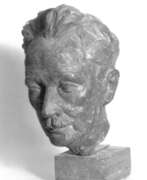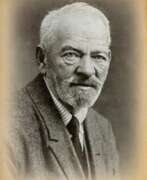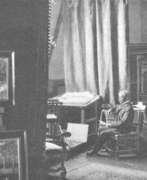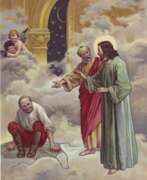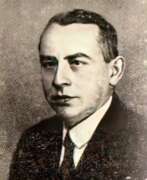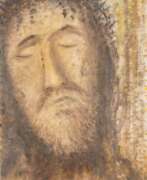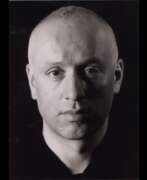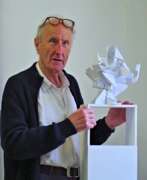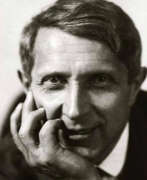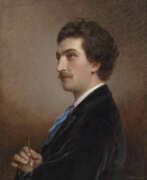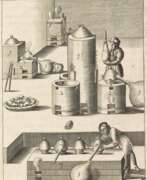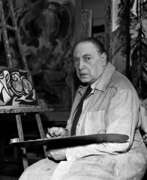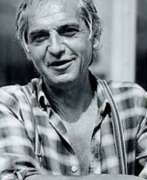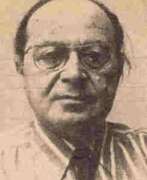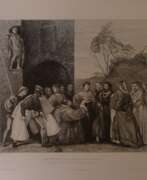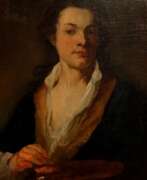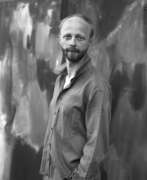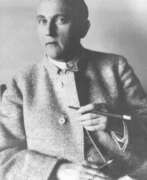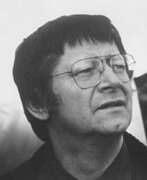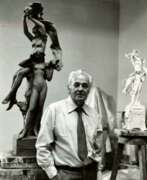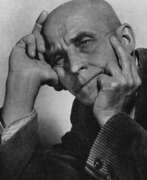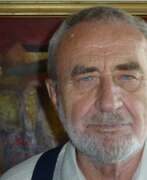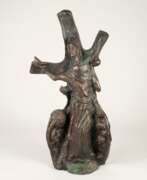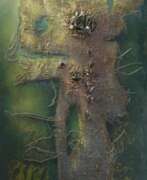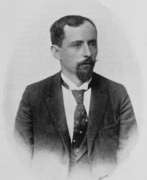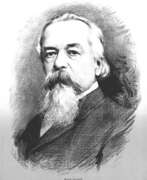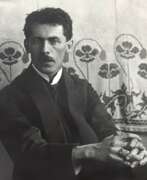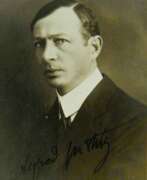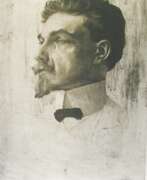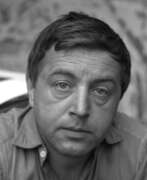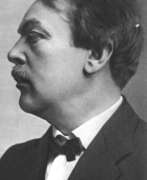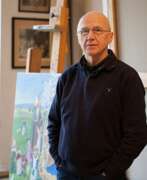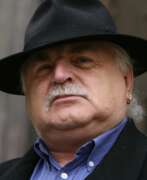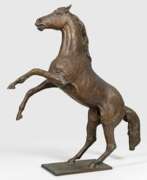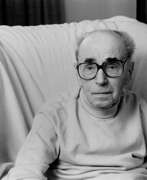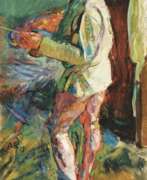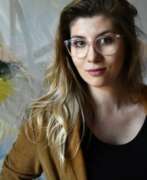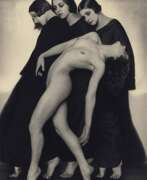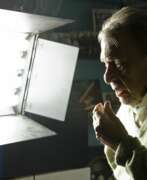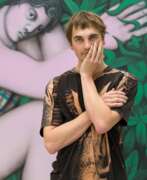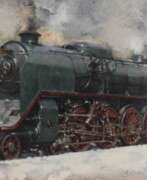Czech Republic


Hannes Beckmann is a German-Czech-American painter. From 1928 he studied painting at the Bauhaus in Dessau, his teachers included Josef Albers, Paul Klee and Wassily Kandinsky. Hannes Beckmann is best known for painting landscapes.
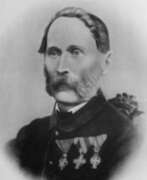

Joseph Georg Böhm was an Austrian astronomer, astrophysicist, cartographer, mathematician, and educator.
At the University of Prague, Böhm attended lectures in mathematics, physics, astronomy, and, after receiving his doctorate, became an assistant at the Vienna Observatory under Joseph Johann von Littrow. He then worked at the observatory at Othen and taught mathematics at the University of Salzburg. In 1839 he was appointed professor of mathematics and practical geometry at the University of Innsbruck, and in 1848 he was elected its rector. In 1852 Böhm was appointed director of the Prague Observatory and professor of theoretical and practical astronomy at the University of Prague.
Georg Böhm published several significant astronomical papers on solar observation. He is the creator of several instruments for astronomical measurements and observations, and he designed the Uranoscope and Universal Gnomon for amateur astronomical observations for the general public. As a member of the commission for the repair of the Prague Astronomical Clock, which he joined in 1865, he wrote a detailed description of it in the work Beschreibung der alterthümlichen Prager Rathausuhr. In addition to astronomy and its popularization, he was also involved in agriculture, economics, and geodesy. One of his important works is Ballistic Experiments (1865).
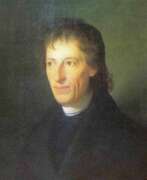

Bernard Bolzano, full name Bernard Placidus Johann Nepomuk Bolzano, was an Italian-born Czech scientist, mathematician, logician, philosopher and theologian.
Bolzano graduated from the University of Prague and was immediately appointed professor of philosophy and religion at the university. Within a few years, however, Bolzano had already shown himself to be a free thinker with his teachings on the social costs of militarism and the needlessness of war. He called for a complete reform of the educational, social, and economic systems that would direct the nation's interests toward peace rather than armed conflict between states. In 1819, Bolzano was expelled from the university for his beliefs and thereafter turned his full attention to works on social, religious, philosophical, and mathematical issues.
Bolzano held advanced views on logic, mathematical quantities, limits, and continuity. He is the author of the first rigorous theory of real numbers and one of the founders of set theory. In his studies of the physical aspects of force, space, and time, he proposed theories opposed to those advanced by the German philosopher Immanuel Kant. His contributions to logic, in particular, established his reputation as the greatest logician of his time. Much of his work remained unpublished during his lifetime and was not widely disseminated until the late nineteenth and early twentieth centuries, when a number of his conclusions were reached independently.
Bolzano was multi-talented in various fields of science to which he made significant contributions. His published works include The Binomial Theorem (1816), A Purely Analytic Proof (1817), The Functional Model and the Scientific Model (1834), An Attempt at a New Statement of Logic (1837), and The Paradoxes of Infinity (1851).
Among other things, Bolzano was also a great philanthropist. Together with his friends and students, he supported the activities of almshouses, homes for the blind, loan banks for the working class, libraries, and elementary schools in rural areas.


Tycho Brahe, born Tyge Ottesen Brahe, more commonly called Tycho, was a prominent Danish astronomer, astrologer, and alchemist of the Renaissance.
As a young man he traveled extensively throughout Europe, studying in Wittenberg, Rostock, Basel, and Augsburg and acquiring mathematical and astronomical instruments. In 1572 Tycho unexpectedly even for himself discovered a new star in Cassiopeia, and the publication of this turned the young Dane into an astronomer of European reputation. For further astronomical research he established an observatory and gathered around him modern progressive scientists.
Besides practicing astronomy, Tycho was an artist, scientist, and craftsman, and everything he undertook or surrounded himself with had to be innovative and beautiful. He even founded a printing house to produce and bind his manuscripts in his own way, and he perfected sanitary ware for convenience. His development of astronomical instruments and his work in measuring and fixing the positions of the stars laid a solid foundation for future discoveries.
Tycho's observations - the most accurate possible before the invention of the telescope - included a comprehensive study of the solar system and the precise positions of more than 777 fixed stars. What Tycho accomplished using only his simple instruments and intellect remains a remarkable achievement of the Renaissance.
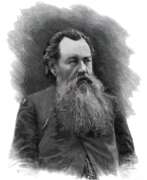

Karel Brož (Russian: Карл Осипович Брож) was a Czech and Russian artist, renowned for his detailed illustrations and watercolors. Born on November 25, 1836, in Prague, he studied at the Vienna Academy of Fine Arts and later moved to Russia, where he became a prominent illustrator for various publications, including "Vsemirnaya Illustratsiya."
Brož's work is characterized by its meticulous attention to detail and vibrant depictions of historical and everyday scenes. His illustrations, particularly for Russian periodicals, captured the essence of 19th-century life and remain highly regarded in art circles.
Collectors value Brož's pieces for their historical significance and artistic quality. His illustrations have been featured in numerous exhibitions and are part of prestigious collections. For those interested in historical illustrations, Karel Brož’s work offers a unique glimpse into the past.
Sign up for updates on new product sales and auction events related to Karel Brož to stay informed about the latest opportunities to acquire his work.
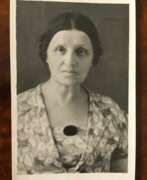

Lyudmila Davidovna Burliuk-Kuznetsova (Russian: Людмила Давидовна Бурлюк-Кузнецова) was a pivotal figure in the Russian avant-garde movement, born into a family renowned for its contribution to art and poetry. Her journey into the art world began with her studies at the Higher Art School of Painting, Sculpture, and Architecture at the Imperial Academy of Arts in St. Petersburg from 1903 to 1907. During her studies, she married Vasily Kuznetsov, a master of monumental and decorative sculpture, which marked the beginning of her active engagement with the Russian art scene. She was a vibrant participant in exhibitions across Russia, including those by the Association of Kharkov Artists, the Union of Russian Artists in St. Petersburg, and the art group "Wreath-Stefanos".
After a flourishing start, the mid-1910s saw Burliuk-Kuznetsova stepping back from her artistic endeavors to focus on her family. The tragic death of her husband in 1923 due to typhus left her to support their four children through her art, creating a diverse range of works from portraits to poster designs, even for the Saratov circus. Despite the personal hardships and the loss of two sons during World War II, her resilience and dedication to art never waned.
In her later years, she moved to Prague to live with her sister Marianna, where she rediscovered her passion for art and held a personal exhibition in 1967. Her work, deeply influenced by impressionism and particularly by the works of Paul Cezanne and Camille Pissarro, demonstrated her exceptional talent and her ability to capture the subtle interplay of light and atmosphere, conveying the magic of unpretentious natural motifs with grace and sensitivity.
For collectors and experts in art and antiques, Burliuk-Kuznetsova's story is not just one of artistic achievement but also of profound personal strength and perseverance. Her legacy is a testament to the vibrant spirit of the Russian avant-garde movement and its enduring influence on the art world.
To stay updated on artworks and auction events related to Lyudmila Davidovna Burliuk-Kuznetsova, consider signing up for updates. This subscription will ensure you're informed about new sales and exhibitions, keeping you connected to the legacy of this remarkable artist.
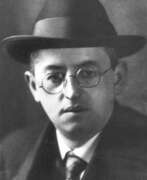

Josef Čapek was a Czech artist, writer, and journalist. He was the younger brother of writer Karel Čapek. Josef Čapek studied at the School of Applied Arts in Prague and later in Paris, where he was influenced by Cubism and Surrealism.
Čapek was a prolific artist, working in various mediums including painting, printmaking, and illustration. He is perhaps best known for his work in the area of puppetry, having created a number of puppet shows that were popular in Czechoslovakia during the 1920s and 1930s. His puppets were known for their expressive faces and whimsical designs.
Čapek was also a writer and journalist, and he wrote plays, essays, and articles for various newspapers and magazines. He was a member of the Czechoslovakian avant-garde group Devětsil, which promoted modern art and literature in the country.
During World War II, Čapek was arrested by the Nazis for his anti-fascist views and was sent to the Bergen-Belsen concentration camp. He died there in 1945, just weeks before the camp was liberated by Allied forces.
Čapek's legacy as an artist and writer is significant, and he is considered one of the most important Czech artists of the 20th century. His work is represented in many collections around the world, including the National Gallery in Prague and the Museum of Modern Art in New York.


Jiří David is a contemporary Czech artist working in various techniques, including painting, sculpture, installation and photography. Co-founder of the art group Tvrdohlaví . His most famous media work is the neon heart over Prague Castle at the end of the last term of President Václav Havel.
Jiří David studied at the Prague Academy of Fine Arts. His work is characterised by a conceptual approach and a critical engagement with art history and social issues. He often creates large-scale installations that engage the viewer and explore the relationship between art and its audience.
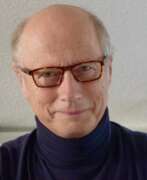

Simon Dittrich is a German painter and graphic artist who lives and works in Stuttgart, Munich, Tuscany and Styria.
Dittrich studied painting at the University of Fine Arts in Berlin, is a member of the Munich and Darmstadt Secession, and a member of the Sudeten-German Academy of Sciences.
Simon Dittrich's early works are dominated by landscapes, animals and still lifes, characterized by varied color and clear lines that emphasize contours. His later works, however, gravitate towards figurative concepts with an abstract tendency.
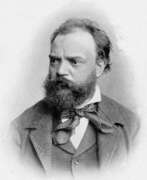

Antonín Leopold Dvořák was a Czech composer of the Romantic era and one of the founders of the Czech national school of music.
Dvořák showed musical talent early on and became an accomplished violinist. After graduating from the Institute of Church Music in Prague, he worked as a musician in various ensembles and taught, but lived very poorly. However, already in the 1860s he composed two symphonies, an opera, chamber music and many songs.
In 1875 Dvořák received a state scholarship from the Austrian government and met Johannes Brahms, with whom he developed a fruitful friendship. Dvořák's Moravian Duets (1876) for soprano and contralto and Slavonic Dances (1878) for piano duet first brought the composer and the music of his country to the world's attention. In 1884 he made a successful visit to England, and in 1890 the great composer Pyotr Ilyich Tchaikovsky arranged two concerts for him in Moscow. The following year Dvořák became an honorary doctor of music at Cambridge University.
In 1892 Dvořák accepted the post of director of the newly established National Conservatory in New York and, in addition to this work, traveled extensively in the United States, but in 1895 he returned to his homeland.
Through his work Dvořák expanded the path of the Czech national music school started by Bedřich Smetana. He composed in almost all classical music genres, and his symphonies and concertos, choruses and chamber compositions continue to be performed all over the world. Dvořák's best-known works include Symphony No. 9 "From the New World" (written in the USA), the opera Rusalka, the Concerto for Cello and Orchestra, the "American" String Quartet, Requiem, Stabat Mater and Slavonic Dances.
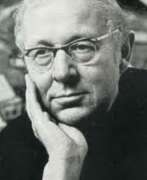

Frantisek Emler was a Czech painter, draftsman, graphic artist, illustrator, and stage designer.
He studied at the Academy of Fine Arts in Prague, was a student at the Academy of Fine Arts in Rome, and then at the Ecole Nationale Supérieure des Beaux-Arts in Paris.
Emler painted still lifes and portraits, but his main subject was landscape painting. He was the author of sets for several opera and theater productions and also illustrated several books.


Michel Fingesten, a Czech-Austrian artist of Jewish origin, was an important graphic artist and designer of 20th century bookplates. In the world of bookplates he is often compared to Picasso, and he embarked on a varied artistic career.
Fingesten studied at the Academy of Fine Arts in Vienna, travelled the world and refined his craft in Munich. In 1913 he settled in Berlin and devoted himself to etching. In his private life he married and became a father, while his art flourished with contributions to silent films and over 500 bookplates. Fleeing Nazi persecution, he settled in Italy in 1935, but was interned there. After liberation, he returned to painting and died in Cerisano, Calabria in 1943.
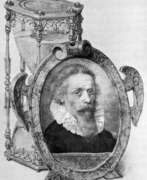

Georg Flegel was a German painter, best known for his still-life works.
According to the RKD he was pupil of Lucas van Valckenborch in Linz during 1582-1592. In a period of about 30 years (c. 1600–1630), he produced 110 watercolor and oil pictures, mostly still-life images which often depicted tables set for meals and covered with food, flowers and the occasional animal.
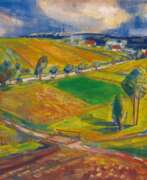

Jaroslav Grus was a Czech painter, graphic artist, illustrator and engraver. He was influenced by Impressionism and Post-Impressionism at the beginning of his career. During study trips to Germany and France (1922-1925), he gained experience and knowledge of Fauvism, thanks to which he developed his own concept of landscape painting.


Johann Hamza was an Austrian genre painter.
Johann Hamza showed a talent for drawing at an early age, then studied painting at the Vienna Academy of Fine Arts and became a leading genre painter in Vienna in the second half of the 19th century.
His son, Hans Hamza (1879-1945), was also a well-known painter.
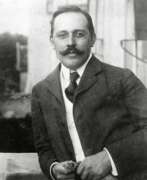

Josef Hoffmann, an Austrian architect and designer, is renowned for his influential contributions to early 20th-century design and architecture. As a founding member of the Vienna Secession and the Wiener Werkstätte, Josef Hoffmann's work is celebrated for its pioneering simplicity and functional elegance.
Josef Hoffmann's designs, which span furniture, decorative arts, and architecture, are distinguished by their minimalistic yet expressive style. His ability to blend aesthetics with functionality marked a significant departure from the ornate styles of the time, influencing modern design principles. Notable works include the Stoclet Palace in Brussels, a masterpiece that showcases his innovative approach to art and architecture.
His creations are preserved in prestigious museums worldwide, including the Museum of Modern Art (MoMA) and the Metropolitan Museum of Art, providing insight into his visionary approach to design. These institutions house collections of Hoffmann's furniture and decorative objects, reflecting his enduring impact on design and architecture.
For collectors and experts in art and antiques, Josef Hoffmann's work offers a study in the evolution of modern design. By subscribing to updates, enthusiasts can stay informed about exhibitions, sales, and academic research related to Josef Hoffmann, deepening their understanding of his contributions to the art and design world.
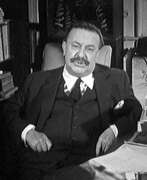

Adolf Hoffmeister (1902-1973) was a Czech artist, writer, journalist, playwright, translator, and diplomat, renowned for his multifaceted contributions to culture and art. His early career saw him collaborate with significant figures in the art world, including Philippe Soupault and Jaroslav Ježek. In 1928, Hoffmeister made his mark with a solo exhibition in Paris and became involved in various literary and artistic publications, such as Lidové noviny and Literární noviny.
Hoffmeister's art often intersected with his political views. He set up the anti-fascist magazine Simplicus in the 1930s and was a member of the Mánes Association of Fine Arts, where he defended the anti-Nazi artwork of John Heartfield. His life was dramatically affected by World War II; fleeing Nazism, he was interned in Paris and a Moroccan concentration camp before reaching New York in 1941. After the war, he returned to Prague and engaged in diplomacy and academia but faced political ostracization following his pro-reform activities in 1968.
Hoffmeister's work in collage was notable, especially his illustrations for Jules Verne's "Around the World in Eighty Days." He was also known for his libretto for the children's opera "Brundibar" and translating James Joyce’s "Anna Livia Plurabelle." His pieces, such as "Demonstration" (1963) and "Greek village by Syrakus" (1960), are preserved in archives like the Ruth and Marvin Sackner Archive of Concrete and Visual Poetry, illustrating his unique approach to visual storytelling.
For collectors, auctioneers, and art and antiques experts, Hoffmeister's works represent a compelling blend of artistic innovation and historical context. His legacy continues to inspire, and keeping informed about exhibitions or sales of his work is essential for those interested in 20th-century European art and literature.


Wenceslaus Hollar, born on July 13, 1607, in Prague, was a Bohemian artist acclaimed for his etchings and engravings. His journey in art began in Germany, where he studied under the engraver Matthäus Merian. Hollar's career flourished when he moved to England, where he worked for various print sellers and publishers, including the notable John Ogilby and antiquarian Sir William Dugdale.
Hollar is remembered for his intricate and detailed works that include over 2,000 pieces, ranging from classical and historical subjects to portraits, costumes, and topographical scenes. His skill in translating texture into the etched medium was unparalleled, even as he lost most of the sight in one eye. Some of his most significant works include "Views of London," created after the Great Fire of London in 1666, which became valuable historical records of the city.
Tragically, Hollar's life was marked by hardships, including financial struggles and the loss of his young son to the plague. Despite these challenges, his dedication to his craft never waned. He continued to produce high-quality works until his death on March 25, 1677, in extreme poverty. Today, his works are held in high regard and are preserved in prestigious collections such as the British Museum in London and the National Gallery in Prague.
Hollar's legacy is a testament to his exceptional talent and his ability to capture the essence of his subjects with precision and depth. His works continue to be a rich source of historical and artistic knowledge, particularly for collectors, auctioneers, and experts in art and antiques.
For those interested in the remarkable etchings and engravings of Wenceslaus Hollar, staying informed about exhibitions and sales of his work can offer valuable insights into his unique artistic perspective.
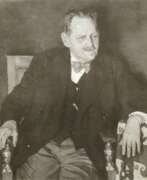

Heinrich Hönich, also known as Jindřich Hönich, was a Czech-German academic artist, graphic designer and teacher.
Hönich studied at the Prague Academy of Fine Arts and the Academy of Fine Arts in Dresden, and lived in Munich from 1906-1928, where he participated in many exhibitions. The artist was mainly engaged in landscape painting and graphics, but also created ex-libris and posters, worked in etching and lithography, was a skillful draughtsman and graphic artist.
From 1928 to 1945 Hönich worked as a professor at the Prague Academy of Art and raised a number of famous artists.
In 1944, Heinrich Hönich was included in the Gottbegnadet list of German artists compiled by the Imperial German Ministry of Public Education and Propaganda under the direction of Joseph Goebbels.
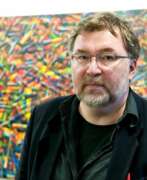

Petr Hrbek is a German artist of Czech origin, who lived and worked in Germany.
Petr Hrbek emigrated with his family to the Federal Republic of Germany as a teenager and studied at a free art school and at the Stuttgart State Academy of Fine Arts. In 1997 he opened his studio in Berlin and participated in many exhibitions in Germany and the Czech Republic.
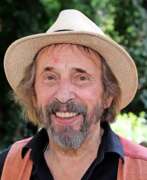

Günter Huniat, born in 1939 in Thammühl, Czech Republic, is a distinguished German artist recognized for his contributions to painting and sculpture. His artistic journey is notable for its diverse expressions and mediums, with a prominent presence in the German art scene, especially in Leipzig where he has been active since 1963.
Huniat's works exhibit a unique blend of thematic elements and styles, showcased through various mediums such as woodcuts, lithographs, and etchings. His art is characterized by a deep exploration of form and color, often reflecting a profound understanding of the subject matter. Some of his notable works include "Am Meer," "Physiognomien eines Vogelfluges VII," and "Afternoon Song (Ch. Baudelaire)," each displaying his versatility in different artistic techniques.
His contributions to the art world extend beyond individual creations. Huniat was instrumental in the formation of the Erste Leipziger Autorengalerie in 1994, along with other artists, indicating his active involvement in the broader artistic community. His works have been featured in several museums and public collections, such as the Lindenau-Museum in Altenburg, Kunstsammlung Gera, Museum Ludwig in Köln, and the Germanisches Nationalmuseum in Nürnberg.
Huniat's work is not just limited to traditional canvases and sculptures; he has also made significant contributions in the field of book illustrations, enriching the literary world with his artistic insights.
For collectors, auctioneers, and experts in art and antiques, Günter Huniat's work offers a unique blend of traditional and contemporary artistic styles. His works, which have been featured in various auctions, continue to attract interest and admiration from the art community.
If you are keen to stay informed about new product sales, auctions, and events related to Günter Huniat's art, signing up for updates would be a beneficial move. This will ensure you receive timely information about opportunities to acquire pieces from this renowned artist's collection.
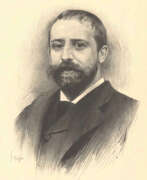

Vojtěch Adalbert Hynais was a Czech painter, designer and graphics artist. He designed the curtain of the Prague National Theatre, decorated a number of buildings in Prague and Vienna, and was a founding member of the Vienna Secession. He was made an Officer of the Légion d'honneur in 1924.


Roman Osipovich Jakobson was a Russian-American linguist and literary theorist.
A pioneer of structural linguistics, Jakobson was one of the most celebrated and influential linguists of the twentieth century. With Nikolai Trubetzkoy, he developed revolutionary new techniques for the analysis of linguistic sound systems, in effect founding the modern discipline of phonology. Jakobson went on to extend similar principles and techniques to the study of other aspects of language such as syntax, morphology and semantics. He made numerous contributions to Slavic linguistics, most notably two studies of Russian case and an analysis of the categories of the Russian verb. Drawing on insights from C. S. Peirce's semiotics, as well as from communication theory and cybernetics, he proposed methods for the investigation of poetry, music, the visual arts, and cinema.
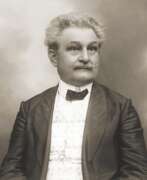

Leoš Janáček, birth name Leo Eugen Janáček, was a Czech composer and musicologist, folklorist, publicist and teacher.
Janáček was a singer in Brno, and studied at the Prague, Leipzig and Vienna Conservatories. In 1881 he founded the Collegium of Organists in Brno, which he directed until 1920. From 1881 to 1888 he directed the Czech Philharmonic Orchestra, and in 1919 he became professor of composition at the Prague Conservatory.
Janáček was deeply in love with national music, collecting folklore and publishing the journal Musical Pages. He was inspired by Moravian and other Slavic music, including Eastern European folk music, to create an original modern musical style.
In his early period of creativity, Janáček was strongly influenced by the musical style and aesthetics of his friend Dvořák. His first opera, Šarka (1887-88), was a romantic work in the spirit of Wagner and Smetana. In his later operas he developed his own distinctly Czech style, built on the intonations of his native speech and folk melodies. Janáček's most important operas are Jenůfa (1904) and Her Foster Daughter, which established the composer's international reputation; The Case of Macro Pulos (1926), From the Dead House (1930), and others. Most of Janáček's operas have been staged in Czech.
Janáček visited Russia three times, and his interest in Russian language and literature resulted in the opera Katya Kabanova (1921) and the orchestral rhapsody Taras Bulba (1918). Janáček also wrote a number of instrumental chamber works. The world-famous composer spent most of his life in Brno, where the vast majority of his works were performed for the first time. Today, Janáček is the most frequently performed Czech opera composer in the world.


Magdalena Jetelová is a Czech installation artist and land artist, who has achieved international acclaim. Known mainly for her environmental installation works, Jetelová combines light, architecture, photography, sculpture, and installation to explore the relationship between humans, objects, and space. Her work has been exhibited in various prominent galleries internationally such as Museu d'Art Contemporani de Barcelona, Tate Gallery London, Museum of Modern Art, 21er Haus, and the Martin-Gropius-Bau. Her work is also in the collection of Hirschorn Museum, the Centre Pompidou, and the Museum Ludwig.


Olaf Jordan was a German and Swedish painter of the first half of the twentieth century. He is known as a portrait painter.
Jordan was attached as a war artist to the collaborationist SS Cossack Cavalry during World War II and created many portraits of Cossacks. Some of his work was confiscated by the Americans, who judged the drawings to be apologia for the Nazi regime. Jordan himself remained in Soviet captivity until 1947, after which he moved to Sweden, where he painted mostly portraits of children. Before the war, he worked on a series of depictions of Yugoslav folk types.
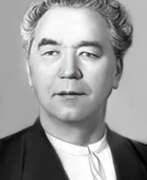

Vasyl Illich Kasiyan (Russian: Василий Ильич Касиян) Vasyl Illich Kasiyan was a Ukrainian artist and graphic designer, celebrated for his contributions to Soviet and Ukrainian visual arts. Born on January 1, 1896, in Mykulyntsi, then part of Austria-Hungary, and passing on June 26, 1976, in Kyiv, Ukrainian SSR, Kasiyan's journey through art was marked by his distinct influence on Soviet-era visual narratives. A World War I veteran, he further honed his artistic skills at the Academy of Fine Arts in Prague in the 1920s under the mentorship of Czech painter Max Švabinský.
Kasiyan's body of work spans various mediums, reflecting the ethos of his times with a deep focus on people, their struggles, and the landscapes they inhabit. Notably, his artworks such as "Portrait of a Young Woman" (1950), "Taras Shevchenko" (1945), and "My Mother" (1940) underscore his mastery in capturing the essence of his subjects, rendering them with an emotional depth that speaks volumes about his connection to the cultural and political landscape of the Soviet Union.
His contributions were widely recognized, earning him titles like the People's Artist of the Soviet Union and the Shevchenko National Prize in 1964, affirming his status as a pivotal figure in Soviet and Ukrainian art. Kasiyan's legacy is not just in the beauty of his works but also in his role as an educator and influencer in the art community, contributing significantly to the National Academy of Visual Arts and Architecture and the Kharkiv Institute of Arts.
For collectors and experts in art and antiques, Vasyl Illich Kasiyan's works represent not only aesthetic beauty but also a historical narrative of the Soviet and Ukrainian people's resilience and spirit. His pieces, found in museums and galleries worldwide, continue to inspire and provoke thought, offering a window into the artist's profound connection with his heritage.
To stay updated on exhibitions and sales featuring Vasyl Illich Kasiyan's art, sign up for our newsletter. This subscription ensures you're the first to know about new discoveries, auction events, and exclusive sales related to this esteemed artist's works.


Alois Kirnig is a German-Czech landscape painter and illustrator.
He studied at the Academy of Fine Arts in Prague, then at the Munich Academy of Fine Arts. The main subject of Kirnig's work is picturesque castles and landscape views of Bohemia and Germany, Austria and Italy. He also created many illustrations for magazines.
In 1866, Kirnig founded his own school of landscape painting. He was also the Czech forum for creative artists Umělecká beseda ("Artistic Discussion").
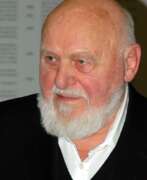

Jan Koblasa was a Czech sculptor, painter, graphic artist, author of philosophical essays and university lecturer. He studied at the Prague Academy of Fine Arts.
Jan Koblasa was a professor of sculpture at the Mufeus Art Academy in Kiel from 1969 to 1997. His lessons included traditional plastic forms of expression, such as portraits, figures and nudes, but he also gave his students great freedom for further artistic activity.
From 2002 to 2005, Koblasa taught as professor emeritus of sculpture at the Academy of Fine Arts in Prague.


Vladimir Kokolia is a Czech painter-engraver, poet and lyricist, professor at the Academy of Fine Arts in Prague.
A versatile and talented artist, Kokolia has mastered many painting and graphic techniques and is known for his color linocuts.
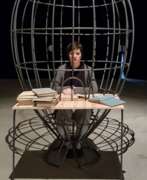

Eva Kot'átková is a Czech installation artist and filmmaker living and working in Prague.
Eva studied at the Prague Academy of Fine Arts, the Prague Academy of Applied Arts, the San Francisco Art Institute and the Vienna Academy of Art. The artist's work combines sculpture, text and performance. Her installations usually consist of multiple objects, drawings, photographs, models, and sometimes videos. Her aim is to show how much our personal lives are influenced by our social environment. In her ongoing series "Theater of Talking Objects", Eva Kot'átková tries to find alternative ways of self-expression for those who cannot communicate and integrate in a standard way.
She is co-founder of the Anxiety Institute platform, which examines anxiety as a result of social, political, economic and environmental forces.


Jan Kotík was a Czech artist active from the 1940s.
Kotik was a member of Skupina 42 during World War II. Following the war his art was influenced by Chinese calligraphy. In 1956 he attended the Congress of Alba and signed up to the Final Resolution of the Alba Congress.
